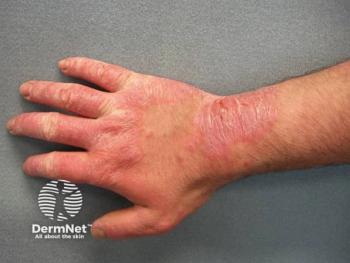
- Dermatology Times, Integrating Gene Expression Profiling Into Skin Cancer Care, September 2025 (Vol. 46. Supp. 05)
- Volume 46
- Issue 05
How GEP Testing is Personalizing Skin Cancer Care Beyond Staging
Key Takeaways
- GEP testing offers personalized tumor biology insights, improving risk stratification for melanoma and SCC beyond traditional pathology.
- The 31-GEP test helps avoid overtreatment in low-risk melanoma cases, reducing unnecessary procedures and patient concerns.
At a recent Dermatology Times Case-Based Roundtable event, Gaurav Singh, MD, MPH, FAAD, FACMS, utilized 3 patient cases to explore the role of GEP testing in melanoma and SCC.
At a recent Dermatology Times
Singh noted that 25% of melanoma deaths occur in stage I disease, underscoring the need for more precise risk-stratification tools. GEP testing fills this gap by providing individualized tumor biology information that cannot be derived from pathology alone. It incorporates factors like patient age and genetic tumor behavior, offering a more nuanced view that informs both treatment escalation and de-escalation.
“The current staging system is failing those patients, and GEP is a net that catches those patients dying from melanoma,” Singh said. “So it's critical to have these results available because doing so would significantly impact the disease burden and mortality that we currently see with melanoma.”
Case No. 1 was that of a 45-year-old woman with a lesion on her foot and a family history of melanoma. The challenge was determining whether surgery alone was sufficient. A Class 1A result from the 31-GEP test confirmed a low-risk tumor, reinforcing that wide local excision was an appropriate and definitive treatment. The patient was counseled extensively on photoprotection and continues skin exams and clinical lymph node assessments every 3 months. This case demonstrated the reassurance 31-GEP provides in stage I melanoma cases, helping providers confidently avoid overtreatment in patients who appear low risk but may harbor aggressive disease under traditional staging.
Case No. 2 involved a 63-year-old man with an asymmetric lesion on his upper back and frequent tanning and sunburns as a young adult. The challenge was deciding whether to perform a sentinel lymph node biopsy (SLNB), which carries morbidity but does not impact survival. With the 31-GEP test revealing a low-risk Class IA tumor, the clinicians could safely forgo SLNB in favor of local excision alone. The patient now follows up for a full skin surveillance exam and clinical lymph node assessment every 3 months. This case further emphasized the power of 31-GEP testing, particularly when SLNB is under consideration, as clinicians can avoid unnecessary procedures and reduce patient concerns.
Case No. 3 presented a 71-year-old man with a raised lesion on his right cheek. He also had a significant medical history to consider, including a previous case of basal cell carcinoma in his 50s. The biopsy revealed a moderately differentiated SCC, with the patient’s age and comorbidities presenting clinical challenges. The 40-GEP test classified the tumor as Class 2B, indicating high risk and the need for adjuvant radiation therapy after Mohs surgery. For ambiguous stage II SCC, 40-GEP offers critical clarity, identifying patients who are likely to benefit from radiation and reducing metastatic progression by up to 50% over 5 years when properly treated.
“There's really no other tool that provides this information that's unique to the patient in front of us,” Singh noted. “This tool incorporates the patient's age and other risk factors that the pathologist is unable to consider in the diagnosis in the realm of cutaneous SCC.”
Throughout the session, he emphasized that GEP testing is changing clinical pathways by integrating personalized molecular diagnostics into skin cancer management. Several attendees noted that access to GEP results has led to fundamentally different treatment decisions, including earlier referrals to surgical or medical oncology, avoidance of invasive procedures, and timely referral for radiation therapy. These tools enable dermatologists to move beyond population-based staging and treat patients in a risk-aligned, personalized manner.
In this landscape, GEP testing, particularly DecisionDx-Melanoma and DecisionDx-SCC, serves as a vital resource in helping dermatologists make informed, biologically driven treatment choices that improve both survival and quality of care. The roundtable conversation emphasized how precision medicine is reshaping dermatologic oncology, and as Singh noted, GEP testing offers a new layer of risk assessment that bridges the gap between clinical staging and real-world outcomes.
Articles in this issue
Newsletter
Like what you’re reading? Subscribe to Dermatology Times for weekly updates on therapies, innovations, and real-world practice tips.



















